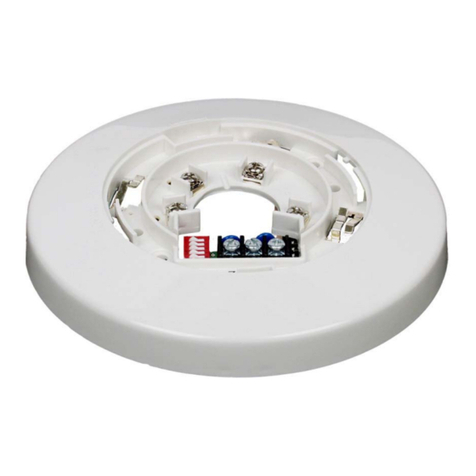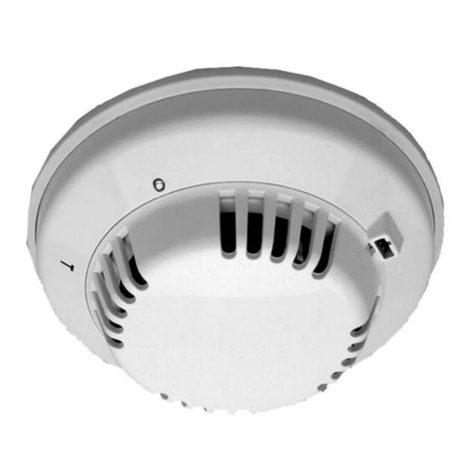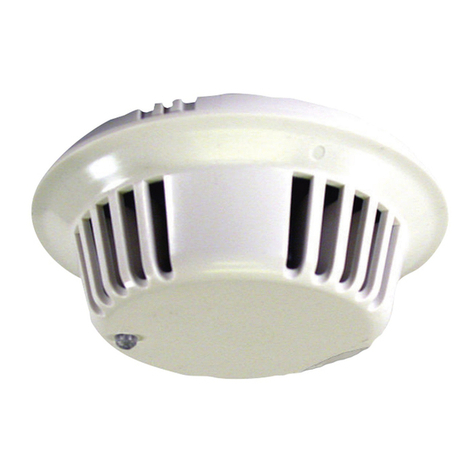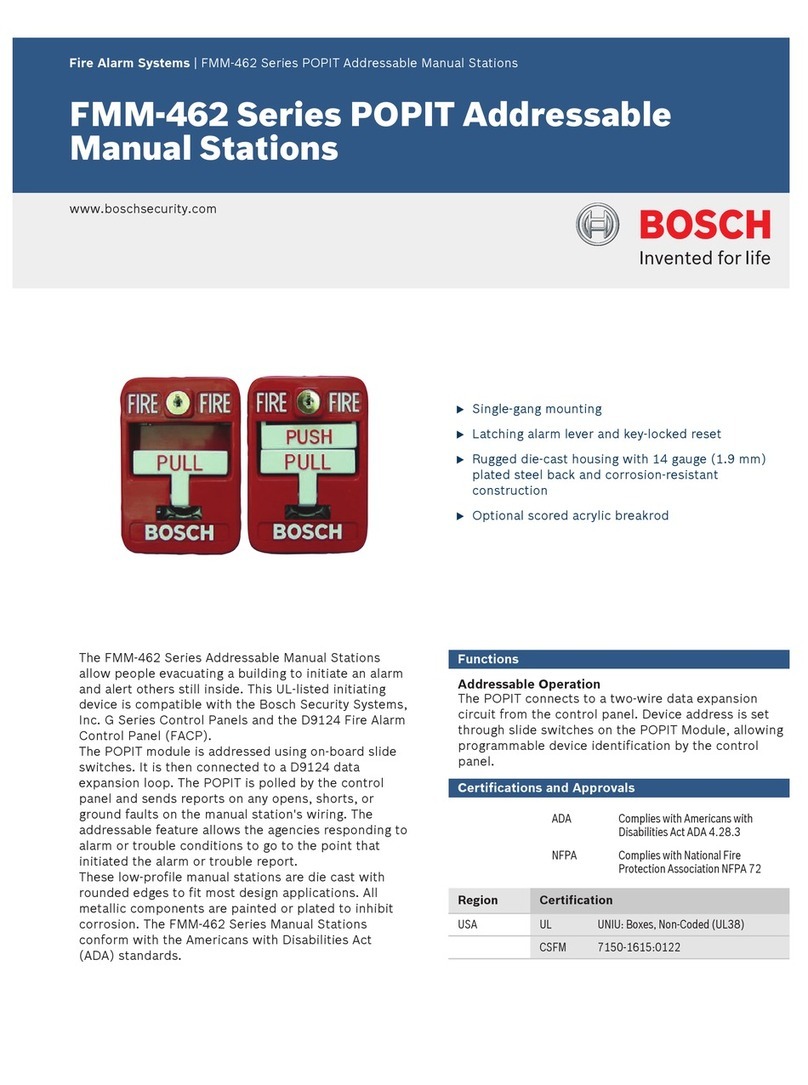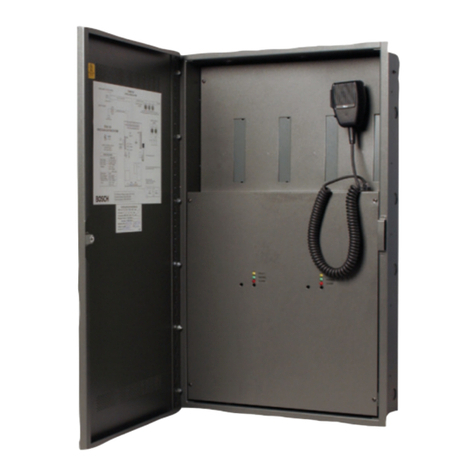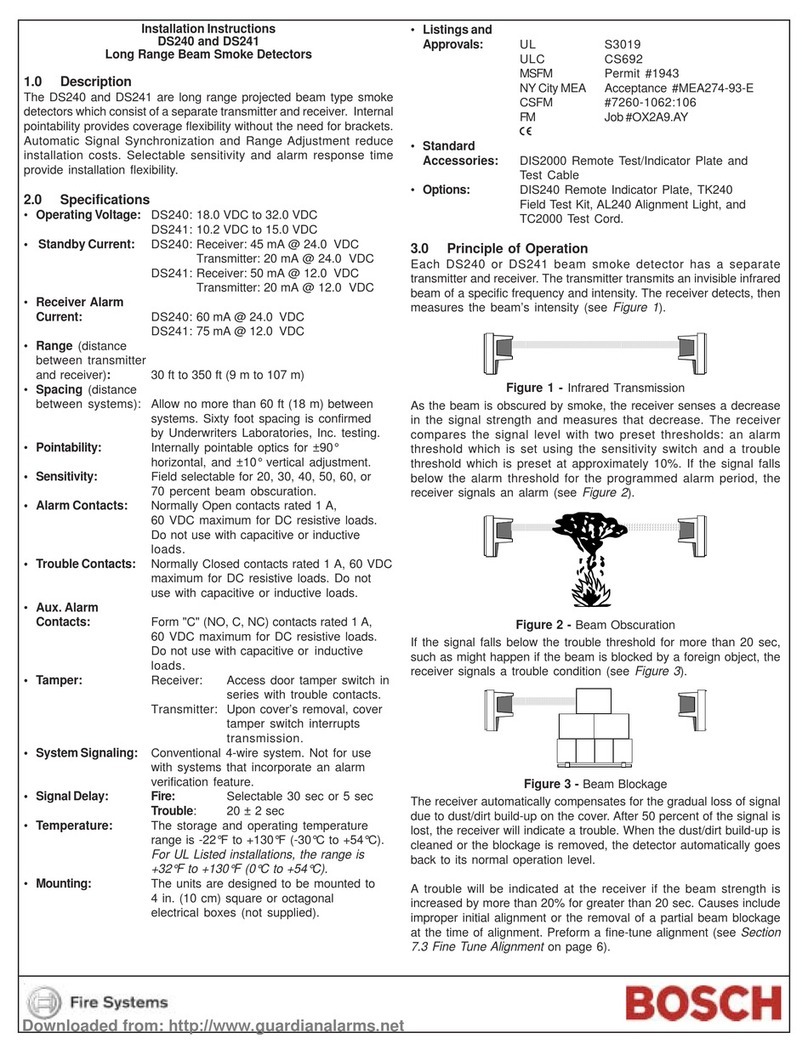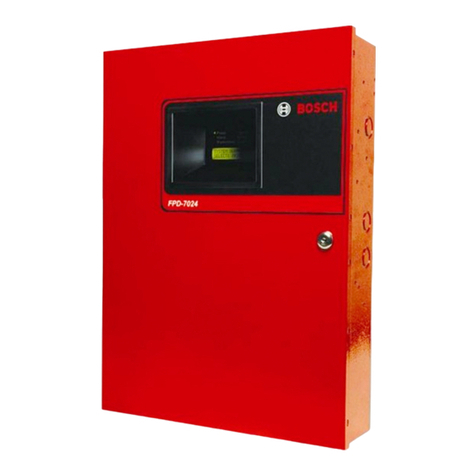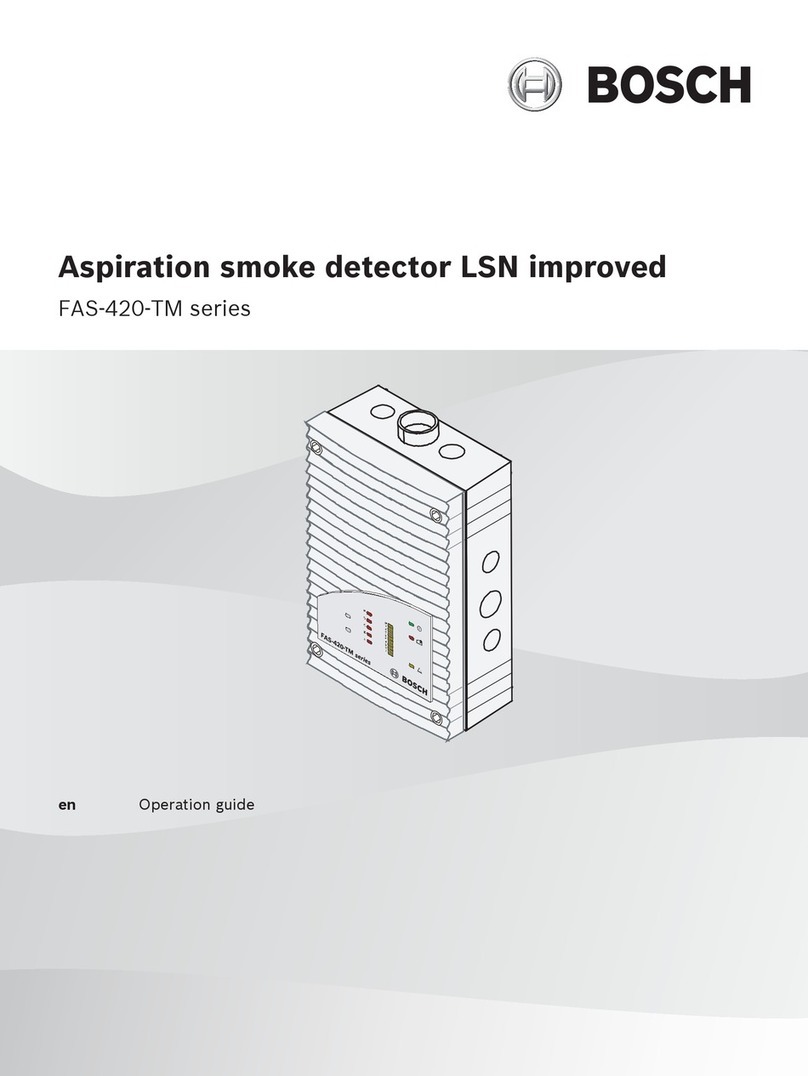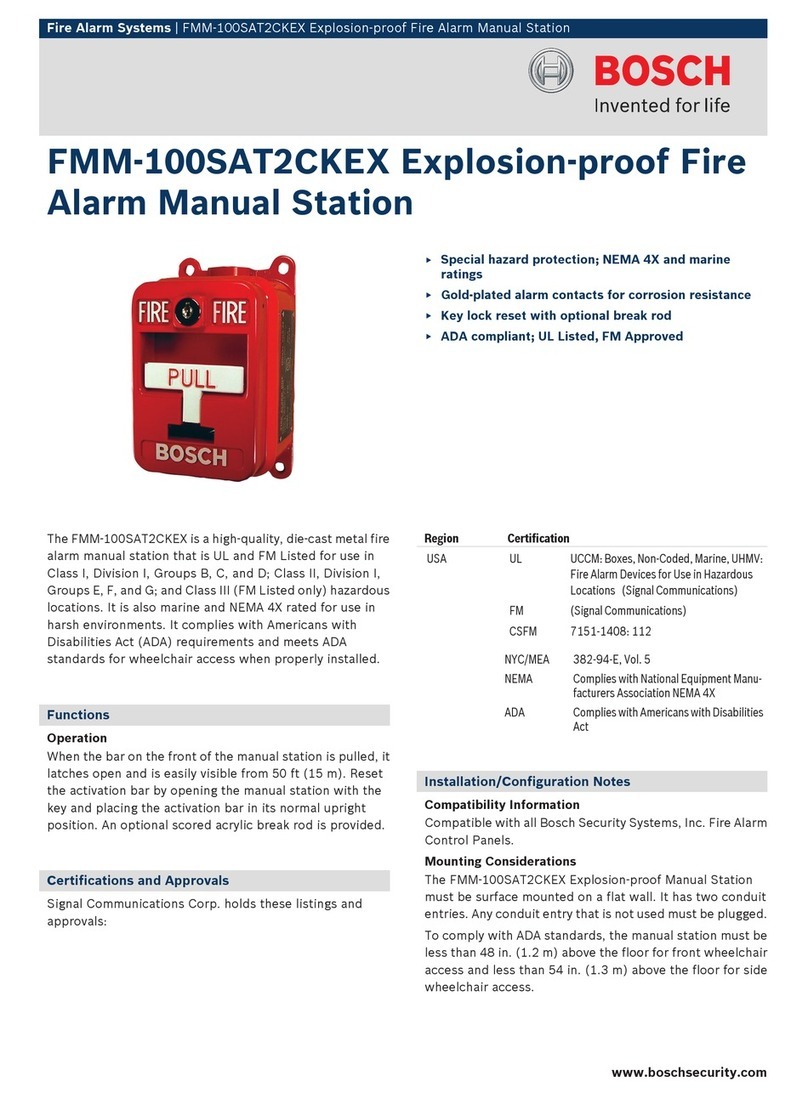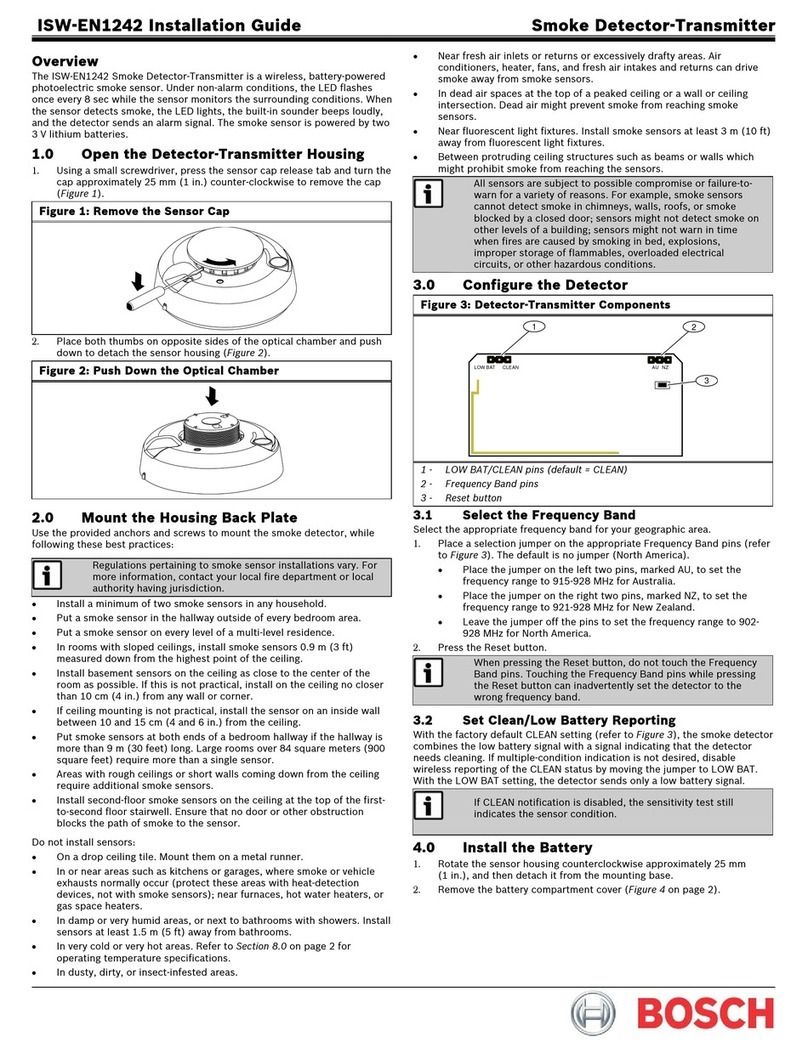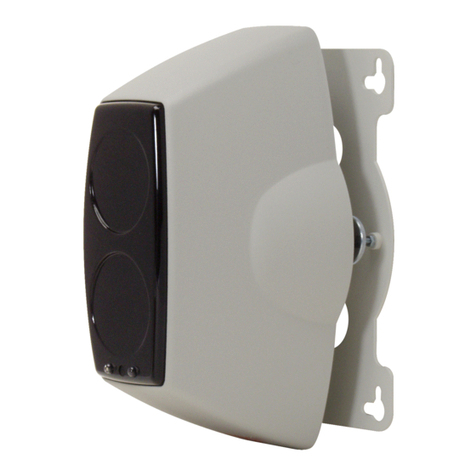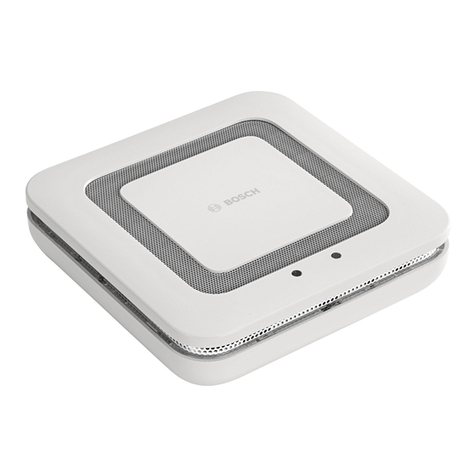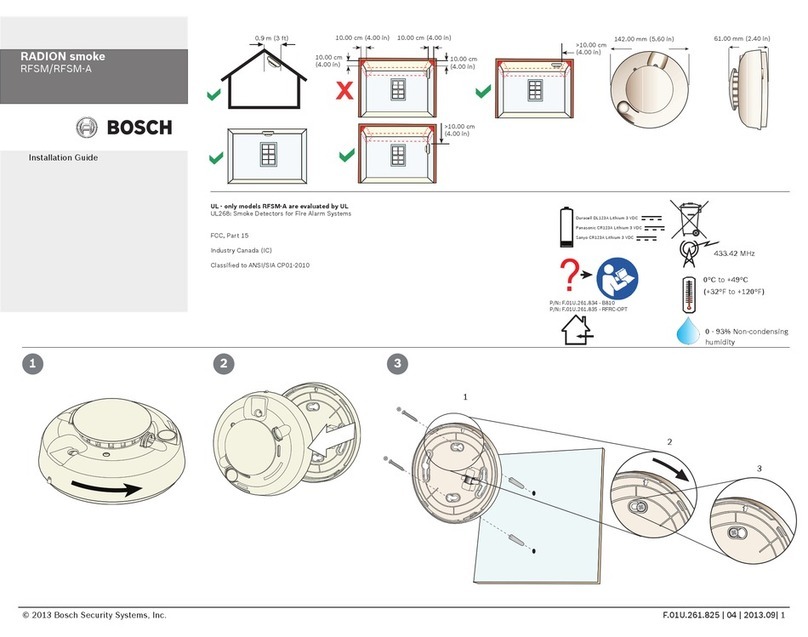
3Bosch Security Systems, Inc. | 09/06 | 31344F
The receiver automatically compensates for the gradual
signal loss because of dust and dirt buildup on the cover.
After a signal loss of 50%, the receiver indicates a
trouble. When the dust and dirt buildup are cleaned or
the blockage is removed, the detector automatically
returns to its normal operation level.
The receiver indicates a trouble if the beam strength
increases by more than 20% for longer than 20 sec. A
trouble can be caused by an initial misalignment or the
removal of a partial beam blockage during alignment.
Perform a fine-tune alignment as described in Section 6.3
Fine-Tune Alignment on page 8.
3.0 Installation Considerations
Correct D296 and D297 location and spacing is critical
in a properly installed and operating fire alarm system.
For best results, place the detectors and space them
according to the National Fire Protection Association
(NFPA) Standard 72, The National Fire Code. This
standard is available at a nominal cost from:
NFPA Protection Association
Batterymarch Park
Quincy, MA 02269
In all installations, good engineering judgement must
prevail.
• Do not use mirrors. Install detectors with a clear
line-of-sight between the transmitter and receiver.
• Clear the beam path of moving objects.
• Set sensitivity based on the distance between the
transmitter and receiver (refer to Section 6.2 Sensitivity
Adjustment on page 8).
• Mount detectors directly to the ceiling or to side
walls. Do not mount them where the beam path runs
parallel within 4 in. (10.2 cm) of a corner.
• For a sloped or peaked ceiling, ensure the beam path
is within 3 ft (1 m) of the ceiling’s peak.
• Air stratification might prevent smoke from reaching
detectors mounted close to the ceiling. Stratification
occurs when smoke, rising because it is warmer than
the surrounding air, reaches a level where it is the
same temperature as the surrounding air and does not
rise to the ceiling. If this is possible, install extra
beams where stratification is expected.
• Avoid areas with normal smoke concentrations, such
as kitchens and garages.
• Do not install detectors where the normal ambient
temperatures are below -22°F (-30°C) or above
+130°F (+54°C).
3.1 Avoid Heat and Air Movement
Sources
• Place the D296 and D297 Detectors where the beam
path does not pass near heating and cooling outlets.
• Do not mount where hot or cold air blows directly
into the beam path.
• Heating, ventilating, and air conditioning (HVAC)
systems can blow smoke away from the beam path.
Smoke must accumulate in the beam path to be
detected.
• Do not mount heaters close to the beam path. Heat
can distort the beam.
• Test for beam distortion by monitoring the signal
voltage.
• After setup, the detector’s signal voltage must read
4 VDC. Monitor the voltage and turn on all heating
and cooling devices in the area. The signal voltage
must not fluctuate more than 0.20 VDC. If it does,
relocate the detector to avoid these disturbances.
3.2 Avoid Bright Light Sources
Sunlight and light from extremely bright sources such
as the exposed bulbs of high-pressure sodium, mercury
vapor, and metal halide lights can cause stray signals.
Do not point the receiver toward any of these sources.
Sunlight: Do not point the receiver directly at the
rising or setting sun. If installing the receiver where
sunlight cannot be avoided, mount it slightly higher
than the transmitter and aim it down toward the
transmitter. This causes the receiver to look below the
horizon.
Bright Lights: Do not mount the receiver where it looks
at exposed bulbs of high-pressure sodium, mercury
vapor, and metal halide lights. Refer to Figure 4 to avoid
exposed lights.
Bare fluorescent lights can also create a problem,
especially in long hallways where a series of lights are
perpendicular to the beam. Incandescent lights are not a
problem as long as they are not directly in the beam
path.
D296/D297 | Installation Instructions | 3.0 Installation Considerations
1 - Receiver
2 - Do not place bright lights in this area.
Figure 4: Avoiding Exposed Lights

